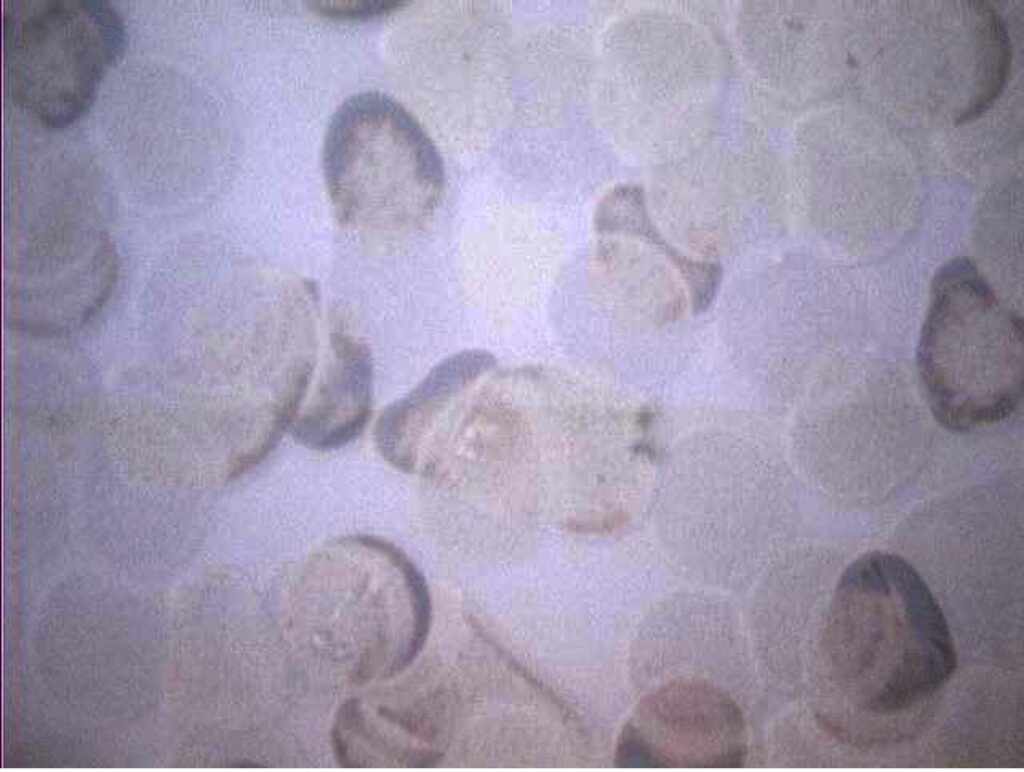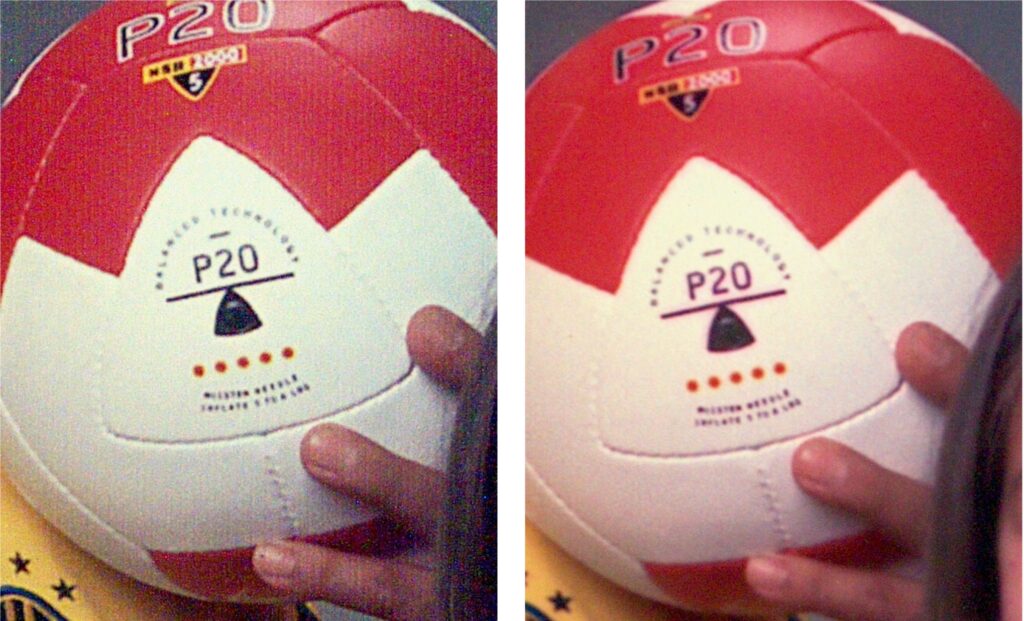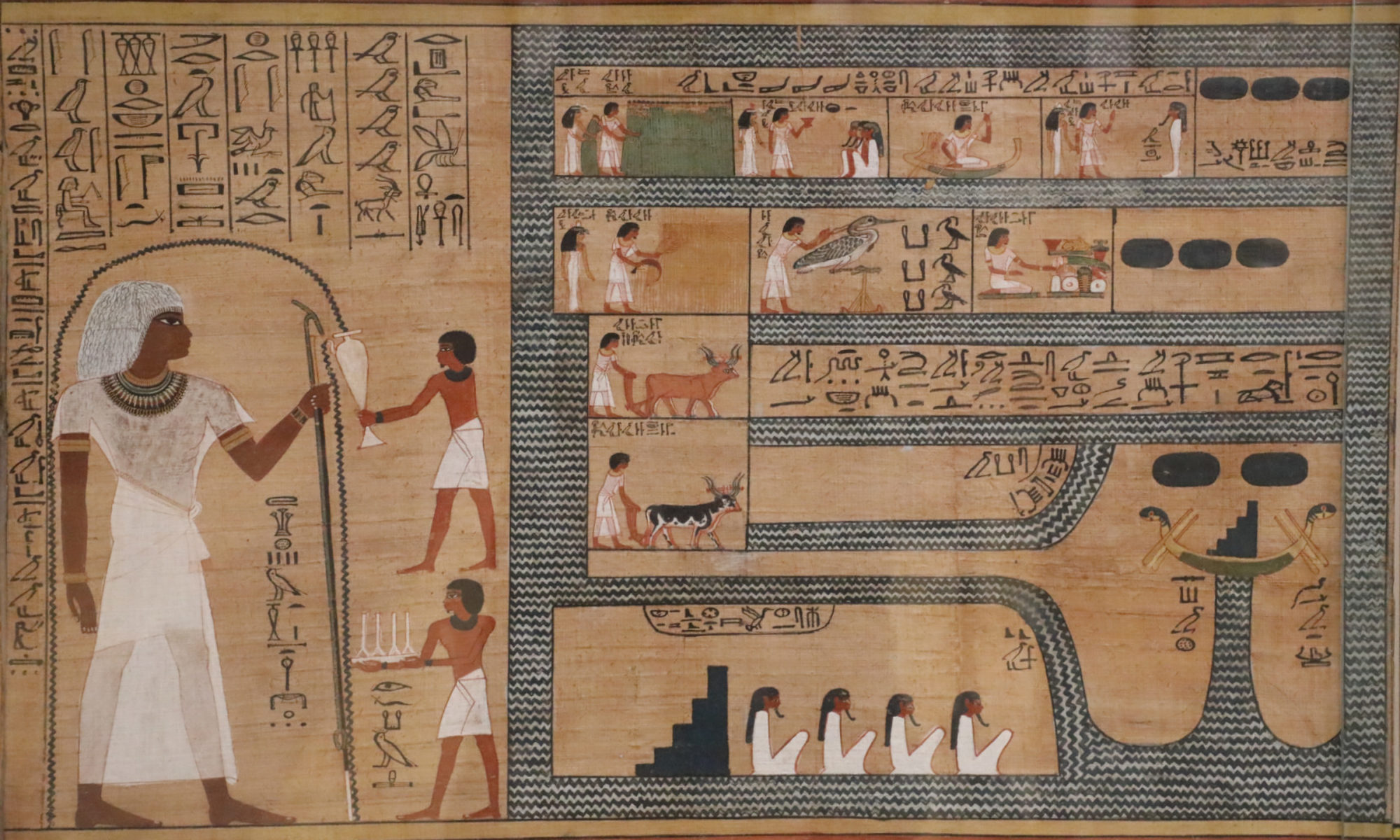Dyes are colorants that molecularly dispersed and pigments are dispersed as nano-particles, typically in 50-150 nanometers range. We start with the discussion how the the inks behave on porous photo media. The surface of porous photo media is made of small alumina or silica nanoparticles, 10-100 nm in size. The media tends to be highly acidic, with the pH of about 4.
When printed on porous photo media, dye based inks penetrate through the pores and reside just beneath the surface. The splats of the dye-based inks tend to be somewhat diffuse as the inks do not chemically react with the media. On the other hand, pigment-based inks react with acidic medias instantly. The polymeric binders, which stabilize the pigment, convert into an acidic, insoluble form, and the ink gels up on contact. As a result, pigmented inks precipitate at the surface and do not go in. The resulting ink splat has clearly defined dimensions and is not diffuse. After the ink vehicle evaporates or penetrates within the media pores, a surface layer made out of the pigment and polymer remains. This causes an undesirable optical effect, known as bronzing, which is caused by the constructive/destructive light interference from both sides of the ink film.

The thickness of the pigment layer is not uniform across the image and depends on how high is the ink flux in a given location. The image gets a rainbow-like appearance locally, which also depends on the viewing angle. In addition, the light that scatters from individual pigment particles makes the appearance hazy.
Because of the lack of bronzing and haze effects, dye based inks on photo media have a superior image quality to that produced with pigment-based inks. They generate images that are very similar to traditional silver halide photographs, which, image quality -wise, still remains the gold standard of photo imaging.
However, dye based inks have some disadvantages. Dyes are small molecules and tend to be more mobile and diffuse in the media, in particular under high humidity conditions. It causes undesirable color changes and losses in the edge definition.


Durability of inkjet ink prints is another aspect to consider. Inkjet dyes are water soluble and photographs tend to be not stable to water splashes, whereas photos printed with pigmented inks are very stable to it. Conversely, because pigmented inks are settling on the surface of the print, the photos are unstable to surface scratches. Dye-based photos do not have this problem.
Performance on digital fine art media (DFA) is still another aspect to consider. Because DFA media is not glossy and generally has a rough surface, pigmented inks produce the image quality generally on par with dye-based inks.
Finally, for a while, the image permanence of pigment-based inks was considered to be superior to that of dye-based inks. Over time, a new generation of inkjet dyes has been developed, the image permanence has improved and they are, if not on par, but close to that of pigments.
To summarize, both dye and pigment-based inkjet inks have a place in photo imaging. Perhaps, because of this, Canon offers both dye and pigment based systems for photo printing, e.g., Canon Pixma Pro 100 (dye-based) and Canon imagePROGRAFPRO-1100 (pigment-based).
From my perspective, dye-based printers are more appropriate for advanced amateurs as they perform well across different media and are also more robust in use. Pigment-based systems suffer because of the ink settling with time, which causes color stability and reliability issues.
